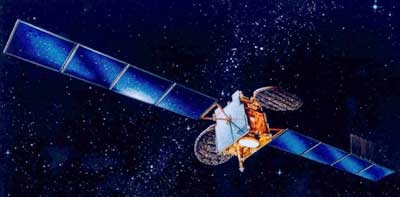Applications
Applications of first generation engines
Science Missions
Communication Satellites
For a typical 3 tonne geostationary communications satellite, with a 6kW solar power capacity, replacing the conventional apogee engine, attitude thrusters and propellant with a microwave propulsion system would result in a reduction of the launch mass to 1.3 tonnes. The satellite would be launched to LEO, where solar arrays and antennas would be deployed. The microwave propulsion system would then propel the satellite in a spiral trajectory up to GEO in 36 days.
Station keeping and attitude control would also utilise the microwave propulsion system. The operational lifetime of the satellite would no longer be restricted by propellant reserves and therefore could be significantly extended. The feasibility study concluded that for the planned GEO launches over the next 10 years, the total cost saving would be £15 billion.
